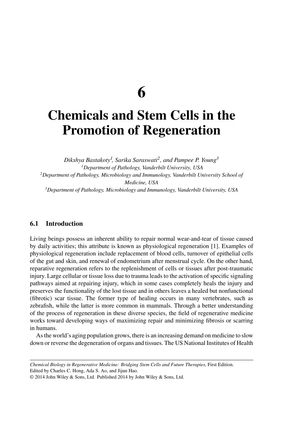Chemicals and Stem Cells in the Promotion of Regeneration
July 2014

TLDR Chemicals and stem cells combined have advanced regenerative medicine with few safety concerns, focusing on improving techniques and treatment effectiveness.
The document from 2014 reviews the use of chemicals and stem cells in regenerative medicine, emphasizing the potential of growth factors, small molecules, and biomaterials to enhance stem cell healing capabilities. It discusses the use of various stem cells, including embryonic, mesenchymal, and induced pluripotent stem cells, in treating diseases and injuries, while also acknowledging challenges such as ethical issues, efficiency, and tumor risk. Small molecules are highlighted for their role in maintaining stem cell properties, directing differentiation, and improving reprogramming efficiency. The document also notes the use of small molecules like purmorphamine, rosiglitazone, and kartogenin to promote differentiation of mesenchymal stem cells, and strategies to improve hematopoietic stem cell isolation and expansion. It concludes that integrating chemical biology with stem-cell biology has advanced regenerative medicine, with minimal safety concerns, and ongoing efforts are focused on standardizing techniques and enhancing therapeutic efficacy.